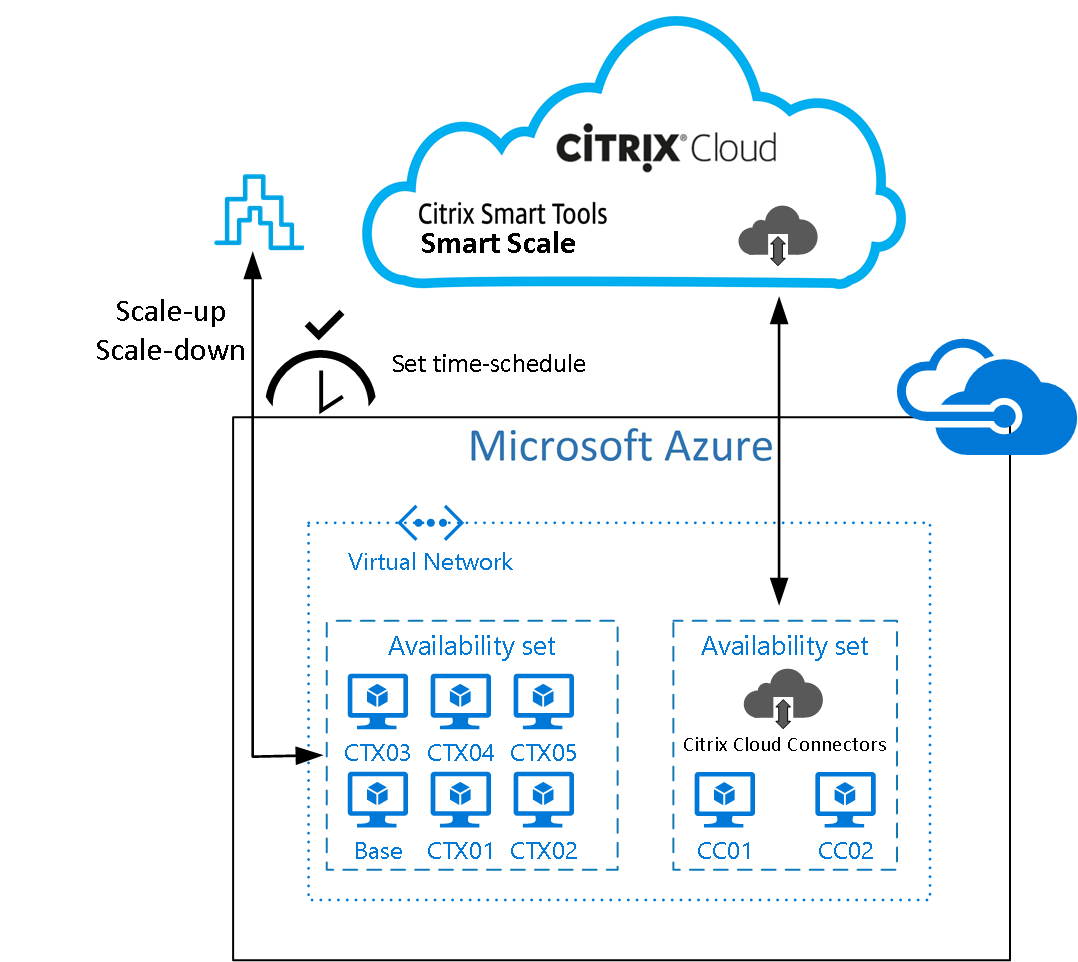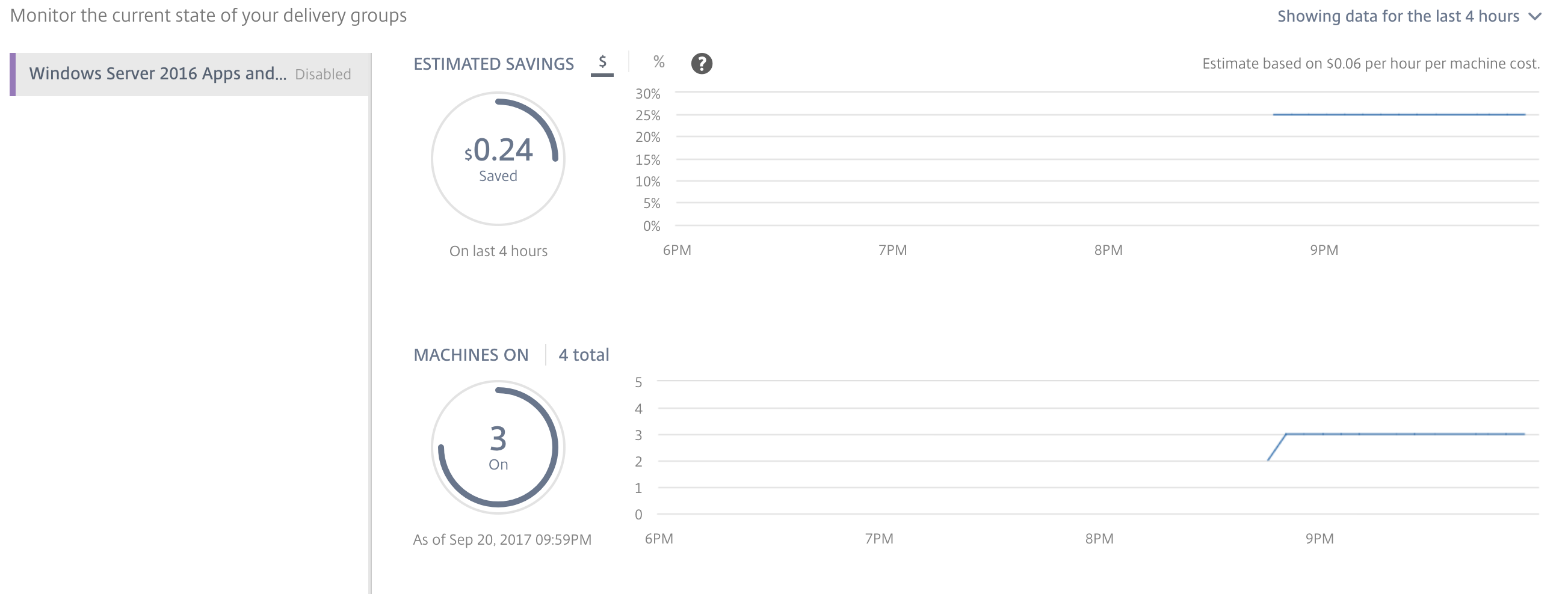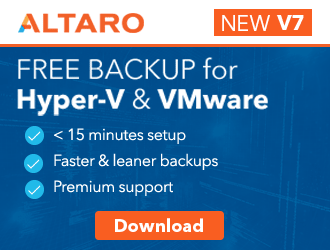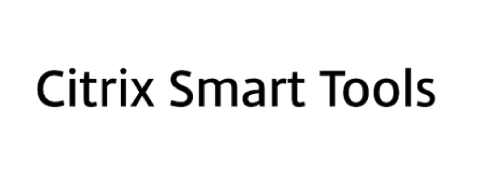
Using Citrix Smart Tools – Smart Scale to reduce your XenApp and XenDesktop on Azure Cloud resource costs
Most of the Citrix Architects and Consultants out there in the field, nowadays looking to (or already are) partitially moving to the Public Cloud. The most approach that I’ve seen throughout the year, are first choosing for a hybrid and/or Proof-of-Concept Cloud scenario. Lifting and shifting small pieces of their resources to the Cloud, just to get more confident about the Cloud. What I’m also seeing is that company’s using a new Cloud-first strategy, when new purchases must take place, the Cloud will then the first place or used as comparing material with on-premises optional.
In addition, I’m also receive a lot of arguments on the public Cloud, one that came out the most is that it is still too expensive to move your complete Citrix workload into Microsoft Azure. Okay, wait… Citrix Smart Scale can fix that for you… That’s the reason why every Citrix (Cloud) customer should consider Smart Scale!
Furthermore, I’m also see that people are not thinking about the large amounts of benefits of the Cloud. Such as the possibility to up and downsize your environment to your own needs, without buying own hardware which needs to be managed for example. On the other hand, this will result in over committing of resource / consumption costs. When choosing for the Cloud for XenApp and XenDesktop, such as Microsoft Azure or Amazon Web Services (AWS). This wouldn’t be a problem, just because you only pay what you use!
So how can Smart Scale fix that for you? For example, when a customer has the same working days of 9 to 7 with a XenApp environment of 10 Virtual Machines for serving their 700 concurrent users (CCU). Why does all those servers still need to run after 7 o’clock? No, it doesn’t always the answer with a Yes. With the Citrix Smart Tools: Smart Scale you are able to accomplish this, and there is more… You are also able to read out / create reports of the savings that have been made, using Smart Scale. Your IT Manager would love this feature!
In this article, I’ll walk you through the steps of how you can activate Smart Smale, just when u use Citrix XenApp or XenDesktop on-premises with a host-connection to Azure ARM or when u use Citrix XenApp and XenDesktop Essentials and XenApp and XenApp Service from inside the Citrix Cloud.
Note: Azure just released a new resources sizing, named as the B-series. Much cheaper machines, including SSD support! See this link for more info!
Table of Contents
Click on the title to get forwarded in the article:
Did you know?
- Smart Scale is part of the Smart Tools service of the Citrix Cloud, which also delivers Smart Migrate, Smart Check and Smart Build. All of them are great tools that can just make your life much easier!
- Citrix Smart Tools is free available to all Citrix customers with an active Citrix Cloud subscription, Software Maintenance or Customer Select support contract.
- Smart Scale calculates the estimated savings for all instances in the Delivery Group, regardless of whether or not they are registered with the Site.
- It can provide the scalability of Public Clouds, such as Microsoft Azure Service Management (Classic) and the Resource Manager and Amazon EC2
- When u use XenDesktop Essentials or XenApp and XenDesktop Server, the Studio is already connected to Smart Scale as Resource location. This is included in the enrollment process! You can recognize that by the site name: Cloudxdsite
- There are 3 methods for configuring the scalability usage savings, Schedule-based, Load-based scaling and Load and schedule-based scaling.
- Within the Load-based scaling, you’ll can setup triggers, based on Session count and Load indexes
- Scale metric determines how load among the machines in your delivery group is managed. Based on the metric you select, users requesting sessions are directed to the machine that is best suited to handle their request.
- Session count enables you to set a maximum number of sessions that are allowed on each machine in the delivery group. When the maximum number of sessions is reached, Smart Tools directs new session requests to other machines in the delivery group.
- Load index determines how likely a machine is to receive connections. This metric is calculated using the Citrix Load Management policy settings configured for concurrent logon, session, CPU, disk, and memory use. By default, a machine is considered at full load if there are at least two session requests waiting to be resolved or the machine is hosting 250 sessions. The maximum load index is 10000.
- Smart Scale can only be used for XenApp and XenDesktop 7.x Sites and Sites using the XenApp and XenDesktop Service delivered from the Citrix Cloud
- Smart Tools has a direct link to their services on smart.cloud.com
- Microsoft just released the Azure Migrate Service (PREVIEW) on their Ignite event, which can help customers to migrate their on-premises VMware and Hyper-V workloads to Azure! See the following link for more information!
- It provides a great simplified dashboard, just to get clear insights results of you cost savings
- It supports Static persistent (dedicated) VDI desktops and Random non-persistent VDI desktops (pooled VDI desktops)
- There is no need to activate a IPsec, ExpressRoute or Citrix NetScaler SD-WAN connection to Microsoft Azure to use Smart Scale.
- It can manage up a maximum of 2,000 VDAs or VDIs per Site, 120 Delivery Groups and 1,000 VDAs or VDIs per Delivery Group to provide power management.
- The Azure Hybrid Use Benefit (HUB) program can save you up 40% of Azure Virtual Machine resource costs. Read here for more information, how to make usage of this program.
- Smart Tools outage and maintenance events are listed on the Citrix Cloud Service Health Dashboard at status.cloud.com – This page displays service status and incidents in real-time for all Citrix Cloud services.
Different Smart Scale Consoles
In Citrix XenApp Essentials, Citrix created a simplified setup, just to enroll a XenApp Essentials environment in some small steps. This also includes a compact and limited version of Smart Scale. Just to get a clear view about both setup solutions, by looking at the 2 screenshots below. On the left side, we see the XenApp Essentials Smart Scale and on the right, the normal full-blown Smart Scale service.
Note: The simplified version of Smart Scale, is only delivered for XenApp Essentials. XenDesktop Essentials must use the full-blown / full features version of Smart Scale, which is included in the license!
Usage and savings reports
The full version of Smart Scale (so not the XenApp Essentials version), also provides a great dashboard to get clear insight views about the statistics of your XenApp and XenDesktop environment. Your manager would love it…
Citrix Cloud Connector
The only method to connect from the Citrix Cloud to your own resources, wherever it it’s a Public Cloud, like Microsoft Azure or just on-premises locations – is to connect them with by using the Citrix Cloud connector, or also known as the Edge servers.
Note: This installation and connection process is already integrated in the XenApp and XenDesktop Essentials and XenApp and XenDesktop Service automated enrollment process.
Within the on-premises version of XenApp and XenDesktop 7.14 or higher, the Citrix Cloud installation is already integrated in the Desktop Delivery Controller setup. So, when you have your Azure Resources configured through a Host Connection, you are already covered for using the Smart Tools.
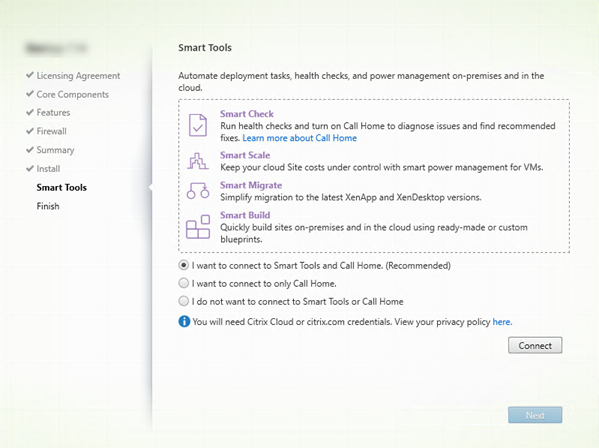
Open the Citrix Smart Tools in the Citrix Cloud
Pre-step: To get started, you first need to create a Citrix Cloud account, which can be requested through the following url – onboarding.cloud.com
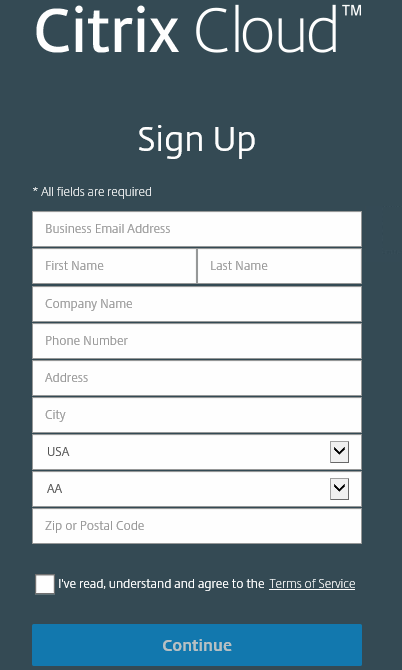
Then go to smart.cloud.com, enter in the Citrix Cloud credentials and click on Manage in the below picture.
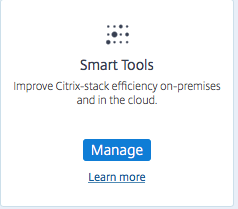
Click on the Smart Scale option
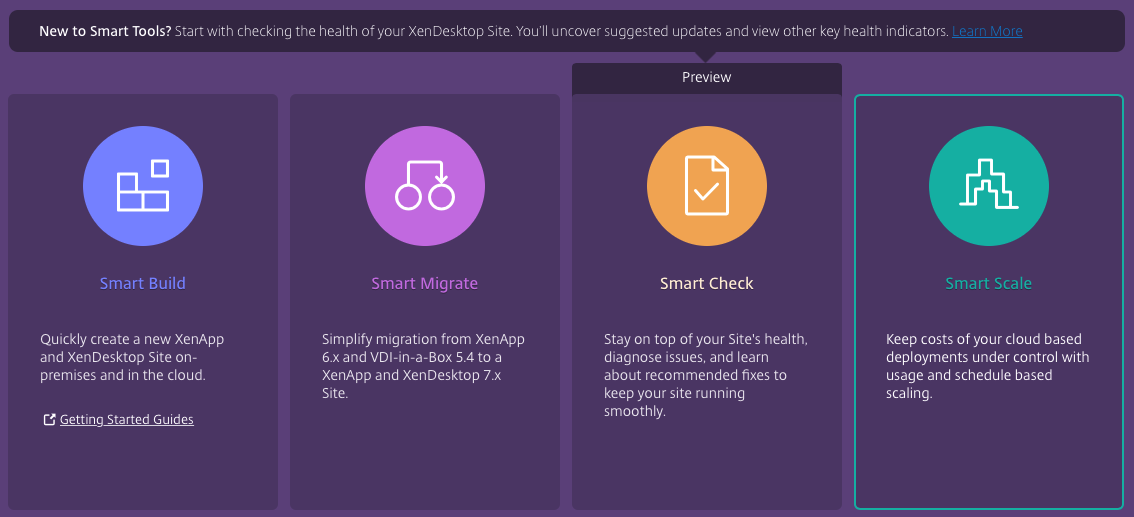
Click on view site
Note: When u use XenDesktop Essentials or XenApp and XenDesktop Server, the Studio is already connected to Smart Scale as Resource location. This is included in the enrollment process! You can recognize that by the site name: Cloudxdsite
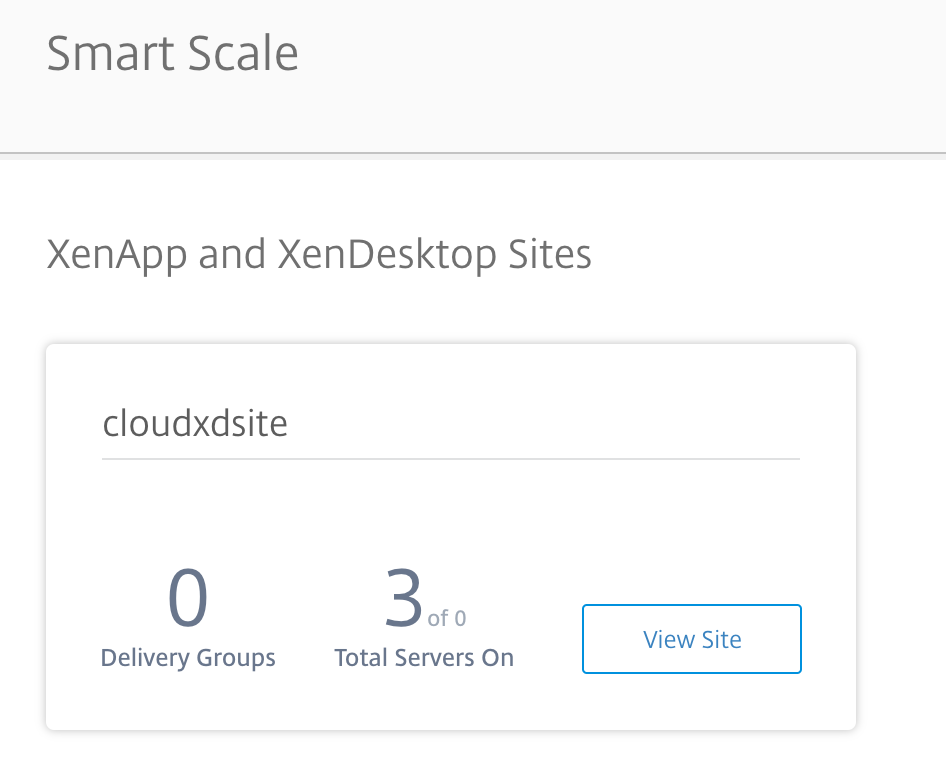
Tip: When you don’t see any Delivery Group, that you just created. Please Click on Site Details and perform the Sync Site Data.

This looks more like it…

Change the default Azure hour charging costs
To provide an accurate costs calculation for our Azure resource, we need to add the default resource costs value per machine. We can do that by entering the amount of US dollars per hour. When you only know the monthly costs, please do the following mathematics: Month / 30 = .. / 24 = value to fill in.
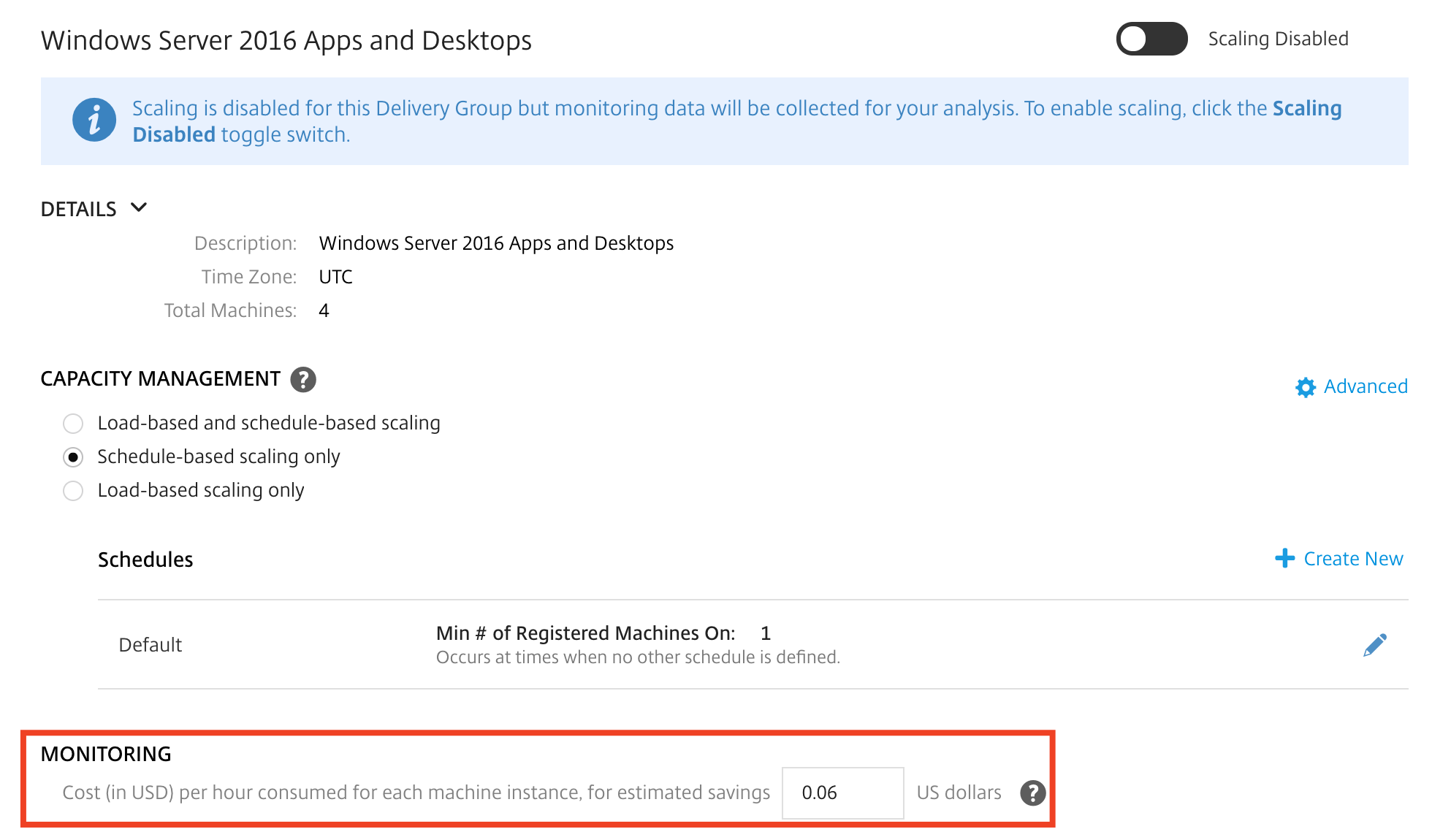
As mentioned in the first section of this article, Smart Scale provides a great way to check estimated costs.
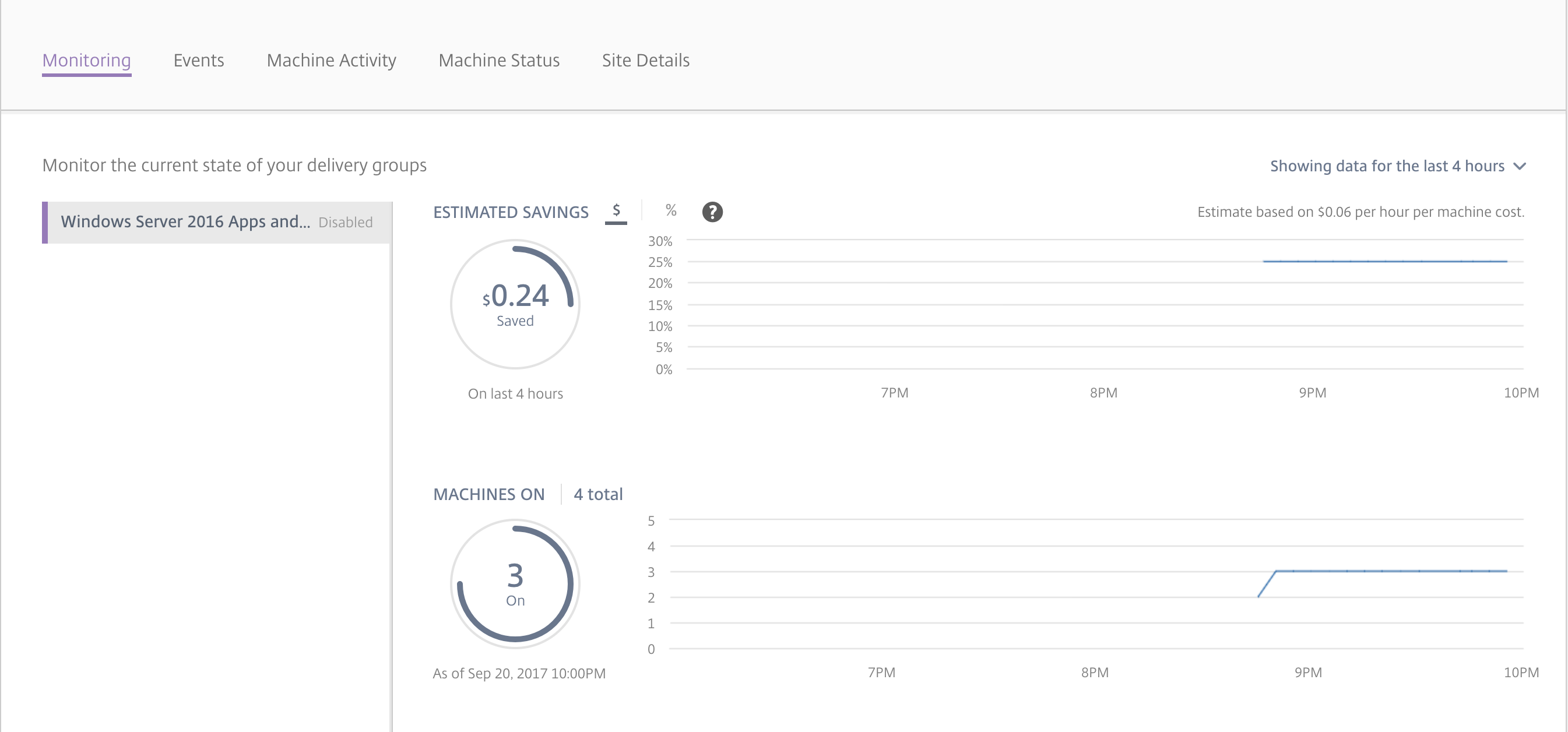
Schedule-based scaling powers on a minimum number of machines during scheduled time periods. Can be used with load-based scaling to effectively optimize the user experience at the start of peak hours.

Click on + Create New
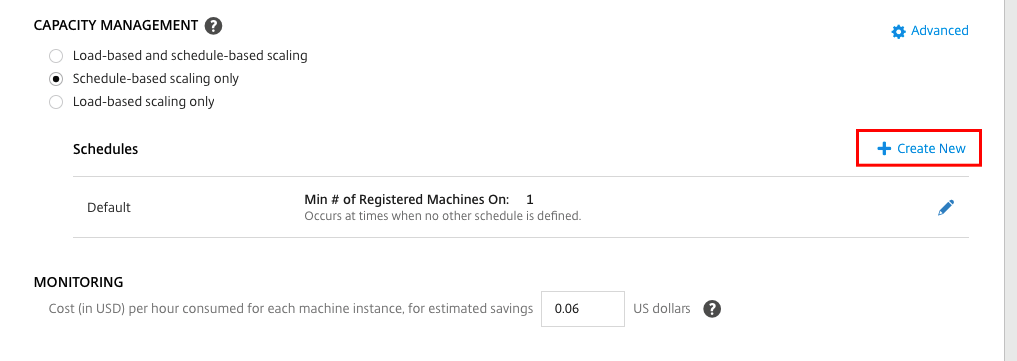
Enter in the timeframe Schedule, as your own business needs. Click Create
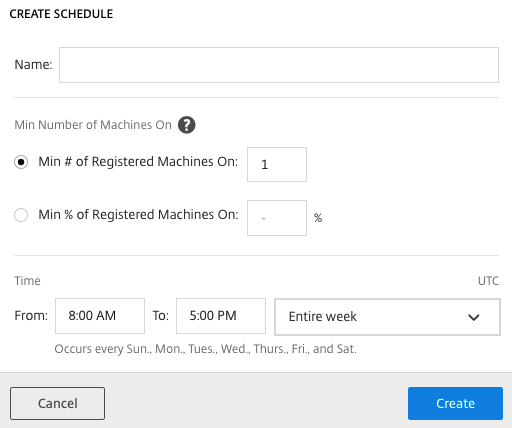
Enable the scaling, by clicking on the slide button

Load-based scaling helps you provide enough machines to handle the current demand for sessions. In Max number of sessions, enter the total number of sessions each machine in the delivery group can host.
Smart Scale includes a capacity buffer, adding spare capacity to current session demand. The default buffer is 10% of the current demand. Example: If the current demand is 100 sessions, Smart Scale accounts for 110 sessions.
If the number of sessions requested (including buffer) exceeds the maximum number of sessions, additional machines are powered on to meet the demand. Example: If the maximum number of sessions is 100 and the current demand is 102 sessions (93 sessions requested plus 10% spare capacity), an additional machine is powered on.
If the number of sessions requested is less than the maximum number of sessions, the excess machines with the fewest sessions are put into maintenance mode. These machines are powered off after any remaining sessions have been terminated.
Enter in the maximum number of sessions per machine.
Note: When the number exceeds, another stand-by XenApp server will be started up from the background.
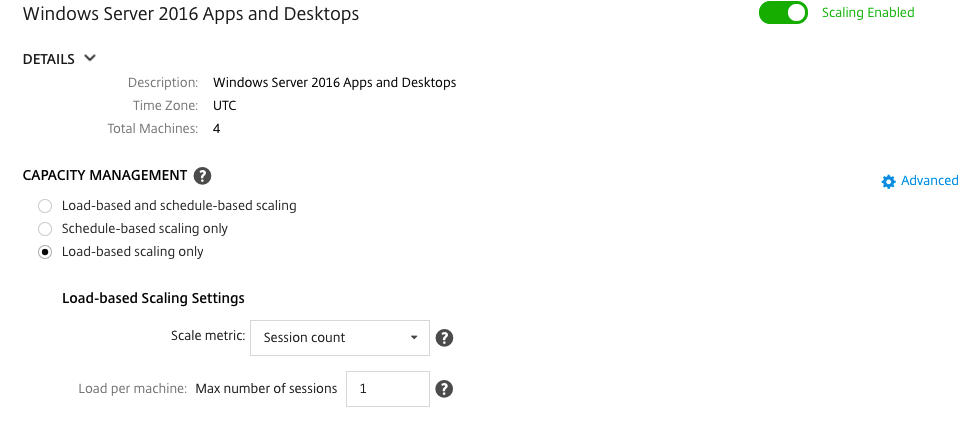
Scheduled and load-based scaling
Within this option, you can combine the strength of both option together. In my opinion, this will be one of the features of Smart Scale. Save costs, and be proactive to ensure the performance and experience for our end users.
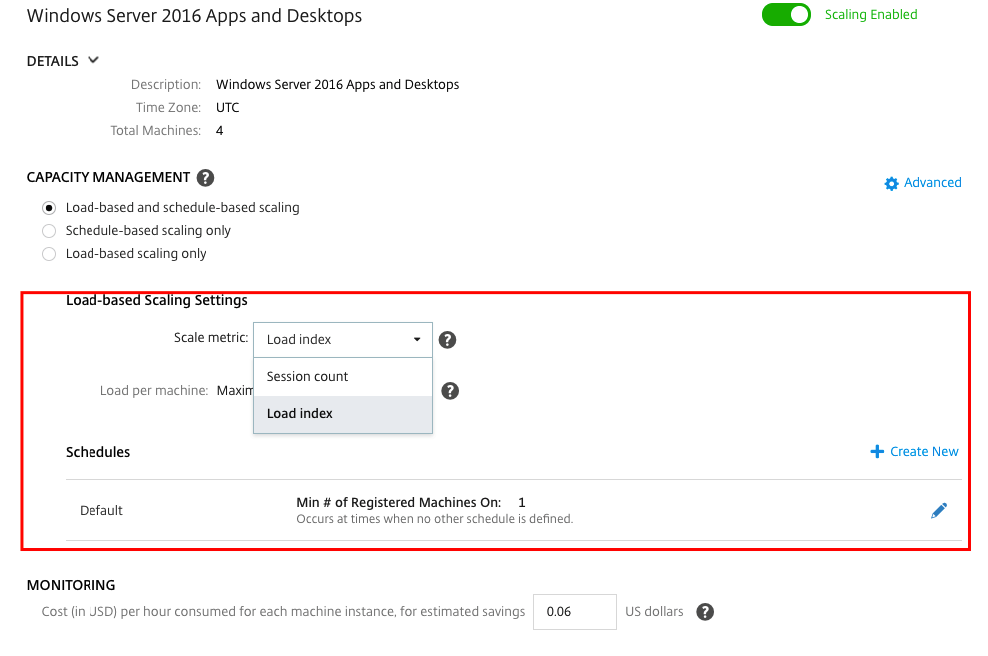
On the capacity buffer, you’ll need to setup the minimum (server capacity) percentage that needs to be available by default.
With the Power off Delay, there is a possibility to increase the interval. Just to interact faster between times when servers are fluctuating
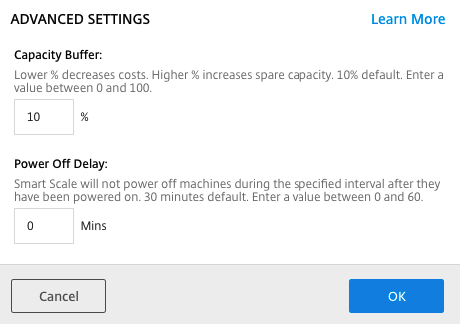
Switch to the Machine Status menu, to collect the current machine status information, which will be provided from the Citrix Studio.
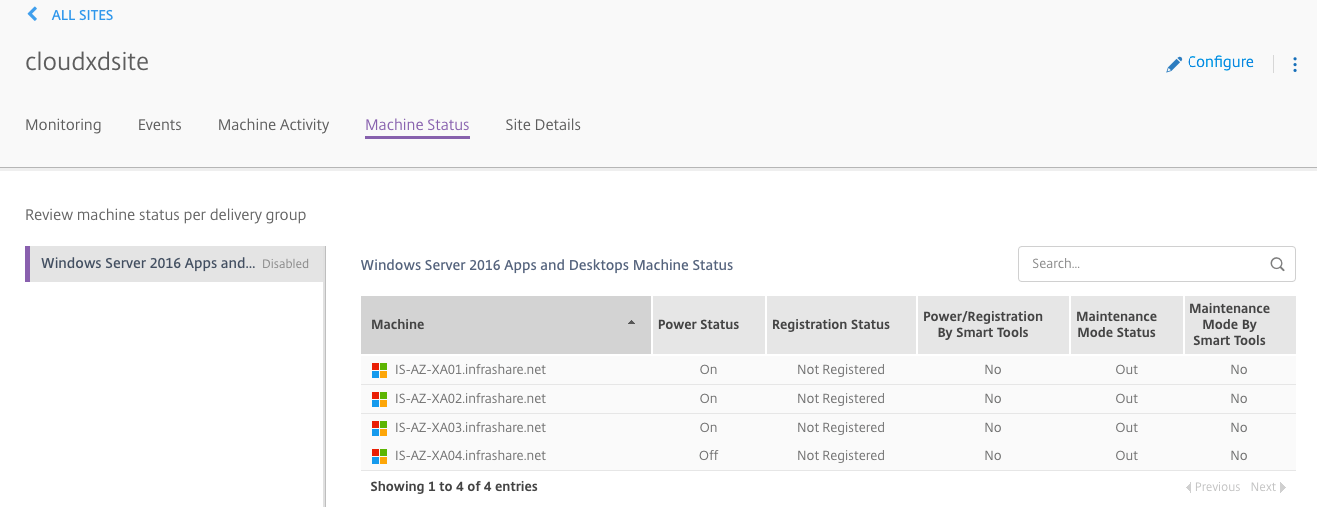
That’s it for now.
Thanks for stopping by.






